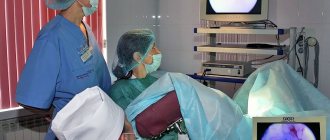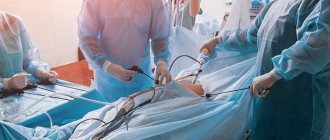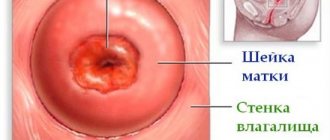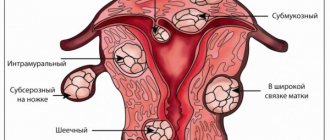A number of gynecological diseases require removal of the uterus to some extent. Various versions of this surgical intervention are the most frequently performed operations in gynecological practice.
Preoperative preparation is an important preparatory stage before surgical treatment. It allows both to prepare the patient’s body, which is especially important in the presence of any extragenital pathology, and to correct certain mental reactions, either by psychotherapeutic methods, or, if necessary, by medication.
A complete set of preoperative preparation measures can minimize the risk of some intraoperative and postoperative complications, as well as to some extent reduce the period of postoperative rehabilitation.
That is why, during planned surgical interventions, patients often have to undergo quite a lot of diagnostic procedures, and sometimes also have to treat concomitant chronic diseases for quite a long time.
Preparing for surgery
Hysterectomy is a rather serious matter and the procedure is performed in an inpatient setting.
Hysterectomy is the most common gynecological operation.
- Before the operation, doctors conduct a thorough examination and confirm the diagnosis using ultrasound and x-ray methods.
- A biopsy may also be taken.
- The patient must undergo a consultation with an anesthesiologist to identify and prevent possible allergic reactions to drugs.
- The day before removal of the uterus, a special slag-free diet and bowel cleansing with an enema are prescribed.
- On the day of the procedure, the patient is given a sedative to reduce fear of the operation.
What are the consequences of not following a diet?
If you don’t follow a regular diet and eat too much, for example, on a fasting day, then you are at risk of weight gain, minor problems with your stool and sometimes with your skin. Violation of the principle of nutrition before the procedure can result in more serious problems. There have been cases when, under general anesthesia, a patient vomited, masses of which entered the lungs. This is a complex emergency situation that is fraught with dangerous consequences, including death. But even if everything works out, it will add more work for doctors.
Also, gusts of vomiting complicate the effect of anesthetics. It becomes more difficult for the patient to recover from anesthesia: he experiences severe dizziness and loses orientation in space. Therefore, anesthesiologists are more likely than others to worry about patients' diet.
Important! If you broke your diet and had a heavy dinner or breakfast before visiting the surgeon, or ate something from the prohibited list, you do not need to hide it from the doctor! Gastric lavage, an enema and a disapproving look from the surgeon are better than the risk of dying on the operating table.
Removal of the uterus, ovaries and appendages
Hysterosalpingo-oophorectomy is an operation in which the uterus is removed along with the appendages and ovaries.
This procedure is the only hope for recovery for many women; in addition, heavy bleeding and severe pain stop, and the constant feeling of discomfort disappears.
Abdominal surgery
If there are no contraindications, then general anesthesia is performed for this operation. In modern German clinics, the operation lasts about 30 minutes. At the site of the incision, a seam approximately 20 cm long remains, it can be horizontal or vertical. It is necessary to wear a post-operative bandage after removal of the uterus for better tissue healing.
Laparoscopic uterus removal
A gentle method of removing the uterus is laparoscopic hysterectomy. This method avoids large abdominal incisions. Laparoscopic removal of the uterus is performed using special equipment:
- Small incisions are made in the abdomen through which tubes are inserted;
- A video camera and the necessary surgical instruments are inserted into the abdominal cavity through tubes;
- To give the surgeon an overview and access to the uterus, the abdominal wall is raised above the organs using gas injected through a special tube - a cannula.
The consequences after removal of the uterus using the laparoscopic method are minimal and postoperative recovery of the body is faster than after abdominal surgery.
“Surgery to remove the uterus” - Video
The video talks about modern gentle methods of performing hysterectomy surgery.
Do I need to pay extra for services provided?
Surgical intervention is free of charge under compulsory medical insurance. It includes: the actual operation, anesthesia (if necessary), consumables, and the use of specialized equipment. The institution's demands for additional payment are illegal. But the patient independently finances travel to and from the site of the operation, as well as preoperative accommodation outside the medical institution. The possibility of providing additional opportunities for a fee is allowed in relation to receiving services not included in the list of the compulsory medical insurance system, including:
- Conducting anonymous diagnostics at the request of the patient (excluding HIV);
- manipulations carried out with a visit to the patient’s home (diagnosis, consultation, treatment), with the exception of the physical impossibility of the patient to come to the medical institution for this;
- diagnostics and medical procedures for sexual pathologies;
- speech therapy activities for the adult population;
- vaccinations with the exception of those provided for by compulsory medical insurance;
- post-operative measures, including sanatorium, if they are not provided for by the insurance program;
- cosmetological manipulations;
- oral prosthetics, except in cases provided for by compulsory medical insurance;
- psychological support for the patient;
- methodological activities for familiarization with patronage, provision of pre-medical care, etc.
Medical institutions that provide paid services in addition to free services are required to inform about their existence by posting lists and price lists on reception stands. At the same time, when deciding on hospitalization, the patient is personally informed about paid opportunities to improve the conditions of stay in the hospital’s inpatient department.
The insured person has the right to contact the insurer or the Compulsory Medical Insurance Fund to clarify the legality of requesting additional funds while staying in a medical institution. Payment for certain services and medications.
Operation price
How much does a hysterectomy cost? Treatment in Israel is the cheapest.
Practice shows that the level of Israeli medicine is quite comparable to the world, and prices are 30-40% lower.
In general, the cost of a hysterectomy operation in each case is calculated separately and greatly depends on the country, city, level of the clinic and the characteristics of your body. Of course, simple removal of the uterus will cost much less than extirpation - complete removal of the uterus along with the appendages and ovaries.
Features of preparing the digestive system
An incorrect diet before surgery, as well as lack of bowel cleansing, can lead to intestinal paresis or postoperative flatulence. To prevent these phenomena, it is necessary to follow an appropriate diet in the preoperative period. This involves eating foods that are high in calories but contain minimal fiber.
Consumption of dairy products is also contraindicated. Approximately 14 hours before surgery, it is recommended to stop eating altogether. You can drink sweet tea the evening before surgery.
In the morning, in order to prevent flatulence and postoperative intestinal paresis, a cleansing enema is performed. During the operation, as well as for some time after it, eating is not recommended. However, all this time the body still consumes energy, which means it needs it. Most often, intravenous drip administration of glucose solution is used to replenish energy reserves.
After operation
Postoperative period
During abdominal surgery, the patient spends about 2 weeks in the hospital. 7 days after the procedure, the doctor removes the staples from the suture. The speed of healing depends on the physiological characteristics of each patient.
If the hysterectomy was global, that is, all ligaments and lymph nodes were removed, then significant changes occur in the pelvic area, which prolong the recovery period after removal of the uterus.
Recovery and rehabilitation
Postoperative therapy is aimed at restoring water and electrolyte balance and blood, as well as preventing inflammatory processes.
It is imperative to pay attention to the psychological aspect: any operation is stressful, and gynecological surgery is a very serious shock for any woman.
Sick leave after hysterectomy is usually issued for a period of 25 to 45 days. Some women tolerate the operation very easily and return to work after 3 weeks.
Diet
In nutrition after removal of the uterus, a woman must adhere to a gentle diet: no aggressive or irritating foods. The following should be excluded from the diet: confectionery, coffee and strong tea, cottage cheese, chocolate, white bread.
To “start” the functioning of the intestines after surgery, you need to eat little by little, but often - 5-7 times a day. Daily water consumption should be increased to 2-4 liters. It is necessary to consume foods that have a weakening effect:
- porridge,
- meat broth,
- fermented milk group of products.
The basic rule is to strictly adhere to the diet prescribed by the attending physician, both in the first days after completion of the operation and after discharge.
Physical exercise
During the rehabilitation period after removal of the uterus, the loads should be feasible; you should not lift more than 5 kg.
Of course, you need to perform any physical exercises only after the incisions have completely healed, otherwise the stitches may come apart from excessive effort. It would be wise to consult with your doctor; he will tell you which gymnastics after removal of the uterus will be optimal for you.
By the way, many doctors advise getting up and even walking slowly in the first days after surgery. Such moderate physical activity will prevent blood from stagnating in the organs, and the healing process will go faster.
Psychotherapeutic conversations and medication preparation
Psychotherapeutic preparation is carried out to a greater or lesser extent before each operation. During the conversation, the doctor explains to the patient the essence of the surgical intervention and the need for it, describes the possible features of the rehabilitation period after the operation, and also convinces that all measures will be taken to ensure that the operation is painless.
Medicines are also used in preparation for surgical interventions. Most often there is a need to ensure normal sleep on the eve of surgery. Approximately half an hour before the surgical intervention itself, premedication is carried out.
Anticholinergics, antihistamines, and narcotic analgesics are used. The choice of premedication agents depends on both the selected agents for providing anesthesia and the drugs used for muscle relaxation, as well as on the individual characteristics of each patient. Immediately before the operation, urine is removed using a catheter, since as the operation progresses with a full bladder, the chance of injury to it increases significantly.
Possible complications
- Pain after removal of the uterus may be due to the formation of adhesions or bleeding. These symptoms often appear during the first time after surgery.
- Also, the consequences of the operation can be thrombosis of the deep veins of the legs, various urination disorders, suppuration of the suture, and hematomas. All these complications significantly prolong the recovery process.
- Often, after removal of the uterus, women experience all the symptoms of menopause.
- It is also possible to experience a decrease in libido and vaginal dryness, but such complications are the exception rather than the rule.
- After removal of the uterus, patients become more susceptible to diseases such as osteoporosis and atherosclerosis.
Discharge after hysterectomy
After removal of the uterus, spotting is possible, since the functions of the ovaries are not affected, and sex hormones affect the cervix. In this case, the main thing is that there is no increase in discharge.
If you have any concerns, you shouldn’t wait for everything to go away on its own. Be sure to consult a doctor for an examination and a correct diagnosis.
If you have any concerns, contact your doctor immediately.
In the following cases, it is necessary to notify the attending physician:
- The discharge causes an unpleasant odor, nausea, and fluid incontinence;
- The presence of large clots in the discharge;
- The need to change pads multiple times within an hour and the presence of bright red blood discharge from the vagina.
Diagnostic measures in the complex of preoperative preparation
In the process of preparing the patient for a planned gynecological operation, she will have to receive consultations from a number of specialists, as well as undergo many diagnostic procedures. This allows us to minimize risks not only for the patient herself, but also for the operating surgeon.
Before planned surgical interventions, the following studies are usually prescribed:
- A general blood test, as well as a general urinalysis.
- Study of discharge from the genital tract, both bacterioscopic and bacteriological.
- Cytology of smears of the cervix and its canal, diagnostic curettage with cytological examination if necessary.
- Any surgical intervention carries a risk of blood loss, which means it is necessary to determine the blood group according to the ABO system and the Rh factor.
- A coagulogram is also mandatory, which allows you to determine the presence of certain abnormalities in the blood coagulation system.
- A biochemical blood test that allows you to assess the condition of almost all organs.
- They also take tests for HIV, hepatitis B and C, and syphilis.
- Blood pressure is measured, and electrocardiographic and radiographic examinations are performed.
HRT
HRT - hormone replacement therapy - is necessary after removal of the uterus and ovaries, because the body loses the ability to produce hormones on its own without the ovaries. So hormone therapy after hysterectomy is recommended for all women, regardless of age. In fact, this is a replacement for ovarian function lost as a result of surgery.
HRT uses:
- gestagens,
- estrogens,
- sometimes androgens.
There are a number of contraindications for the use of hormonal drugs after removal of the uterus, which are clarified during a comprehensive gynecological examination.
When deleted
The decision to have a hysterectomy is difficult for every woman. However, there are a number of mandatory indications in which removal of the uterus will help not only improve health, but also save life.
Diseases that are not amenable to other treatment methods include:
- Uterine fibroids. An appointment for removal occurs only in cases where the growth of fibroids occurs too rapidly. The operation is performed when the size of the formation is comparable to 12 weeks of pregnancy. If the size of uterine fibroids is smaller, they try to treat it with medication.
- Endometriosis. Proliferation of the layers of the uterine mucosa is possible at any age. The main provocateur of the disease is any gynecological operation or abortion. Removal is necessary due to possible infection of other nearby organs by endometriosis: bladder, intestines, vagina, ovaries.
- Malignant tumors on the surface of the cervix. In recent years, scientists have tended to believe that this form of cancerous growth is associated with the papilloma virus and is sexually transmitted, but there are cases where cervical cancer has also appeared in virgins. If the pathology is detected at its initial stage, the tumor can be successfully cured with drugs. In severe and fairly advanced forms of the disease, the uterus must be removed.
- Uterine cancer. Most often found in women of premenopausal age from 40 to 50 years. Symptoms of the disease: bleeding, weakness, sudden weight loss, severe pain. The most reliable method of treatment for this pathology is radical removal of the uterus.
Prescription for surgery is also possible in the following cases:
- necrotic changes in the uterine fibroid node;
- gender change;
- adenomyosis in stages 3 or 4;
- submucosal uterine fibroids;
- prolapse or prolapse of the uterus and other organs;
- menorrhagia complicated by anemia;
- chronic pelvic pain.
Watch the video about the treatment
Treatment in an Israeli clinic
Oncogynecology in Israel
Types of anesthesia
Depending on the method of surgery performed, complete or local anesthesia may be used.
Sometimes the decision about what type of anesthesia is needed can be made together with the patient, who is given the right to choose.
Internal or general anesthesia (with intubation and breathing) is most often used for open hysterectomy, when removal is performed through an incision in the peritoneum. The advantages of this type of anesthesia include: deep sleep in which the patient remains throughout the entire operation, the absence of any discomfort or pain, and good control of the doctors over the woman’s condition.
A local type of anesthesia (spinal or epidural anesthesia) is used when removing the uterus laparoscopically or vaginally. The advantage of this method of anesthesia is that it causes much less harm to the patient’s health, because throughout the entire procedure she remains conscious but does not feel pain.
What kind of anesthesia will be required is decided in each case individually, taking into account a number of factors: the duration and volume of the intervention, the patient’s condition, the presence of concomitant diseases. On average, the duration of the operation takes from 40 minutes to 3 hours.
Reviews
The services of Israeli and German doctors enjoy the best reputation.
In general, the operation for most women is successful and without complications. In addition, foreign clinics carry out postoperative monitoring of their patients. This way the doctor will be able to notice in time if something goes wrong.
To identify diseases in the early stages and diagnose predisposition to them, it is advisable to regularly undergo a comprehensive examination of the body. In our article at the link you will find out what is included in the examination, where it is best to take it and how much it costs.
For more information, see the Gynecology section.
Sample menu
Some people are so nervous on the eve of surgery that they can't get enough of it. Can this be considered a diet? Hardly. You still need to eat to maintain the body in normal condition. Not all products are included in the list of prohibitions, although this is exactly what it seems at first glance. A sample menu might look like this.
Breakfast
Omelet with low-fat milk, soft-boiled egg, fruit salad, tomato, porridge (except forbidden ones), soaked dried fruits.
Dinner
Mashed potatoes (also with low-fat milk or broth), tomato, steamed cutlet or chicken, lean fish fillet, stewed vegetables (except prohibited ones), sausage, soup with potatoes and meatballs.
Dinner
Casserole with potatoes and meat, steam cutlet, stewed vegetables.
Before surgery, you should clarify the specifics of your diet with your attending physician.











